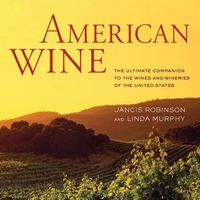Creators Syndicate
American Wine, a comprehensive look at the history and state of wine in America co-authored by Master of Wine Jancis Robinson and Wine Review Online columnist Linda Murphy, is scheduled to be released February 1. It is available on pre-order now ($45) at Amazon. It should be an eye-opener.
Although the focus promises to be on the most important wine-growing regions in the nation, i.e., California, Washington and Oregon, the most important detail is the revelation that good wine is made throughout America, often in places the average American would consider improbable turf for winemaking.
 The subject is near and dear, for I have become a convert to the exciting viticultural possibilities in, say, South Dakota. I won’t pretend that it is a budding Napa Valley waiting to be discovered, but I do know there is a winery, Prairie Berry in Hill City, SD., that has consistently racked up awards at the San Diego International Wine Competition.
The subject is near and dear, for I have become a convert to the exciting viticultural possibilities in, say, South Dakota. I won’t pretend that it is a budding Napa Valley waiting to be discovered, but I do know there is a winery, Prairie Berry in Hill City, SD., that has consistently racked up awards at the San Diego International Wine Competition.
The wines of Prairie Berry are made from grapes, such as Frontenac Gris and Vidal Blanc, that may not be familiar to the average person, but at Prairie Berry they are transformed into delicious, well-balanced wines that impress even grizzled wine judges with more experience, and perhaps a small bias, toward more traditional grape varieties.
Even more startling than the recent success of Prairie Berry was the accomplishment last year of a winery from Wisconsin, Wollersheim, which racked up four platinum awards and was named Winery of the Year at the San Diego International. Wollersheim is located in Prairie du Sac, Wisconsin, where it, too, features hybrid grape varieties made in a range of styles from dry to sweet, but with an emphasis always on exquisite balance.
Less surprising but equally obscure for most Americans are the superb wines of New York, where the primary growing regions are the Finger Lakes upstate and the eastern end of Long Island. The Finger Lakes specialize in aromatic whites, such as Riesling, Gewurztraminer and Gruner Veltliner, while Long Island is a friendly environ for Cabernet Franc and Merlot, with a smattering of good Riesling and Chardonnay.
I’ve also tasted award-winning wines from neighboring New Jersey, Rhode Island and Pennsylvania.
Further south, Virgina, North Carolina and Georgia have made tremendous strides with more traditional grapes. I’ve grown fond of the Cabernet Franc and Viognier from Barboursville and Jefferson Vineyards, both near Charlottesville, Va., at the southwestern tip of the state. Barboursville also makes what I consider one of the two finest Nebbiolo wines (this is the grape of Barolo and Barbaresco in northern Italy) in North America (Baja, Mexico’s LA Cetto makes the other) and Jefferson’s Chardonnay and Bordeaux blend are perhaps the best made in the East Coast and always competitive when up against California rivals in major wine competitions.
 Georgia has a small but significant wine-growing region in the mountains in the southwest corner of the state, where the climate is hot and dry by day and somewhat cool at night. Frogtown Cellars, located in Georgia’s Lumpkin County, concentrates on elegant reds and lush whites made from traditional French grape varieties. These wines also compete successfully on the world stage, always winning a fair share of medals when entered in competitions that attract entries from California, Washington, Oregon, Europe and the Southern Hemisphere.
Georgia has a small but significant wine-growing region in the mountains in the southwest corner of the state, where the climate is hot and dry by day and somewhat cool at night. Frogtown Cellars, located in Georgia’s Lumpkin County, concentrates on elegant reds and lush whites made from traditional French grape varieties. These wines also compete successfully on the world stage, always winning a fair share of medals when entered in competitions that attract entries from California, Washington, Oregon, Europe and the Southern Hemisphere.
I’ve also tasted award-winning wines in recent years from Texas and Colorado.
The reason you may not be aware of this booming culture of American wine is that California, for the most part, gets all the glory. Washington and Oregon pick up California’s crumbs on the publicity front, and the rest of the country goes begging for attention.
Hopefully “American Wine” will alter that dynamic. I am reminded of a query from a San Diego restaurateur just last week, wanting to know of any California distributors who might have inventory from New York or Virginia. Sadly, I know of none.
Even in New York City it is sometimes difficult to find a New York wine, and my experience says the same is true of Virginia wines in Virginia and Georgia wines in Georgia.
Perhaps you will read “American Wine” and seek out some of the more interesting wines from unusual places. More than likely you will be thwarted by your favorite wine merchant, but the internet has changed the rules. Now you can hop on the computer and join a winery’s wine club, bypassing the gatekeepers who either don’t know there are exceptional wines made all over this country, or have little interest beyond the easy sell of California wine.
There are amazing wines being made across America. A book that documents the breadth of America’s winegrowing chops is long overdue.
Email comments to [email protected]. Follow Robert Whitley on Twitter @wineguru or @WhitleyOnWine.
8
